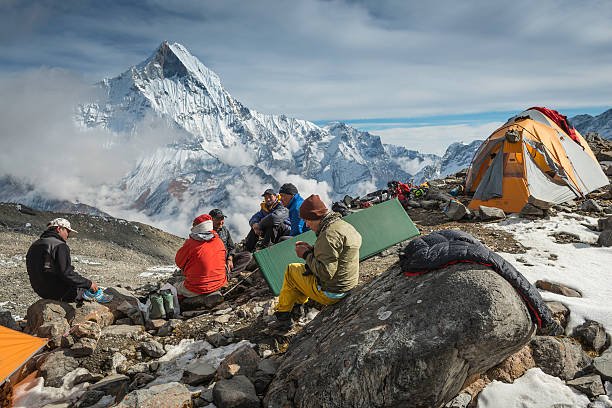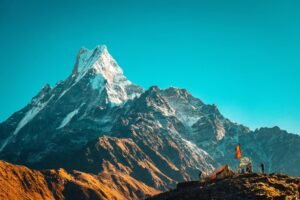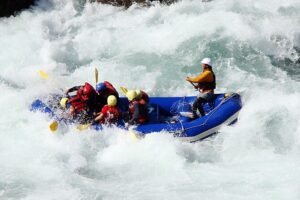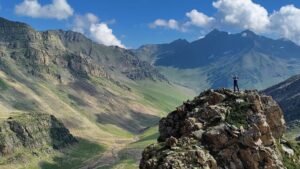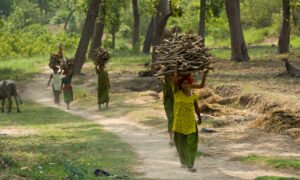The Ultimate Guide to Lightweight Tents for Himalayan Expeditions
Embarking on a Himalayan expedition is a journey of a lifetime. The majestic peaks, remote landscapes, and the sheer challenge of the terrain make it an adventure like no other. However, the success of such an expedition heavily depends on the quality of your gear. One of the most crucial pieces of equipment is your tent. A lightweight, durable, and weatherresistant tent can make all the difference in ensuring your safety and comfort in the harsh conditions of the Himalayas.In this comprehensive guide, we will explore the best lightweight tents for Himalayan expeditions. We’ll delve into the key features to look for, provide detailed reviews of toprated tents, and offer tips on how to choose the right tent for your needs.
Understanding the Requirements of a Himalayan Expedition TentBefore we dive into specific products, it’s essential to understand the unique requirements of a tent for Himalayan expeditions. The extreme weather conditions, high altitudes, and rugged terrain present several challenges that your tent must be able to withstand.
Key Requirements:
- Lightweight and Portable: Given the long treks and the need to carry gear for extended periods, a lightweight tent is crucial. It should be easy to pack and transport without adding excessive weight to your load.
- Durability: The tent must be made of highquality materials that can withstand harsh winds, heavy snow, and rough handling.
- Weather Resistance: Your tent should be able to protect you from extreme weather conditions, including heavy rain, snow, and high winds. Look for tents with high waterproof ratings and robust wind resistance.
- Ease of Setup: At high altitudes, where oxygen levels are lower, physical tasks become more challenging. A tent that is easy to set up and take down can save time and energy.
- Ventilation: Proper ventilation is essential to prevent condensation inside the tent, which can lead to dampness and discomfort.
- Space and Comfort: While weight and portability are important, you also need enough space to sleep comfortably and store your gear. A balance between weight and space is key.
Top Lightweight Tents for Himalayan Expeditions
Now that we know what to look for, let’s explore some of the best lightweight tents available for Himalayan expeditions. These tents have been selected based on their performance, durability, and user reviews.
1.MSR Hubba Hubba NX 2Person Tent
Overview: The MSR Hubba Hubba NX is a popular choice among trekkers and mountaineers. Known for its lightweight design and durability, it offers excellent protection and comfort for highaltitude expeditions.
Key Features:
Weight: 3 lbs 8 oz (1.54 kg).
Material: 20D ripstop nylon with DuraShield coating.
Capacity: 2person.
Waterproof Rating: 3000mm Durashield coating.
Setup: Freestanding design with colorcoded poles.
Ventilation: Mesh panels and adjustable rainfly for improved airflow.
Pros:
Lightweight and compact.
Easy to set up and take down.
Excellent weather resistance.
Good ventilation.
Cons:
Limited space for two people with gear.
Not the best for heavy snow loads.
The MSR Hubba Hubba NX is a versatile and reliable tent that offers a great balance between weight and performance. It’s ideal for those who need a lightweight option without compromising on protection and comfort.
2. Big Agnes Copper Spur HV UL2
Overview: The Big Agnes Copper Spur HV UL2 is renowned for its lightweight construction and spacious interior. It’s designed to provide maximum comfort and protection while keeping the weight to a minimum.
Key Features:
Weight: 2 lbs 11 oz (1.22 kg).
Material: Double ripstop nylon with silicone and polyurethane coating.
Capacity: 2person.
Waterproof Rating: 1200mm silicone/PU coating.
Setup: Freestanding design with hubbed pole system.
Ventilation: Dual lowvent vestibule doors and top vent.
Pros:
Ultralightweight.
Spacious interior.
Easy and quick setup.
Superior ventilation.
Cons:
Higher price point.
Less durable in extreme weather conditions.
The Big Agnes Copper Spur HV UL2 is perfect for those who prioritize weight and comfort. Its spacious design and excellent ventilation make it a great choice for longer expeditions where comfort is key.
3. Hilleberg Nallo 2
Overview: Hilleberg is known for producing some of the most durable and reliable tents on the market, and the Nallo 2 is no exception. It’s built to withstand the harshest conditions, making it ideal for Himalayan expeditions.
Key Features:
Weight: 4 lbs 4 oz (1.9 kg).
Material: Kerlon 1200 fabric with triplecoated silicone.
Capacity: 2person.
Waterproof Rating: 5000mm silicone coating.
Setup: Tunnel design with linked inner and outer tents.
Ventilation: Adjustable vents and large vestibule for airflow.
Pros:
Extremely durable.
Excellent weather resistance.
Spacious vestibule for gear storage.
Reliable in high winds and heavy snow.
Cons:
Heavier than other options.
More complex setup.
The Hilleberg Nallo 2 is designed for serious expeditions where durability and weather resistance are paramount. Its robust construction and spacious design make it a reliable choice for the most challenging conditions.
4.NEMO Hornet Elite 2P
Overview: The NEMO Hornet Elite 2P is one of the lightest freestanding tents available, making it ideal for those who need to minimize weight without sacrificing performance.
Key Features:
Weight: 2 lbs (0.91 kg).
Material: 10D nylon ripstop with silicone/PU coating.
Capacity: 2person.
Waterproof Rating: 1200mm silicone/PU coating.
Setup: Freestanding design with single hubbed pole.
Ventilation: Large mesh panels and dualstage stuff sack for airflow.
Pros:
Ultralightweight.
Quick and easy setup.
Good ventilation.
Packs down small.
Cons:
Limited interior space.
Not as durable in extreme weather.
The NEMO Hornet Elite 2P is perfect for minimalist adventurers who need to keep their pack weight as low as possible. Its lightweight design and efficient setup make it a great choice for fast and light expeditions.
5. Black Diamond Firstlight 2P Tent
Overview: The Black Diamond Firstlight 2P is designed for highaltitude and alpine environments. It’s a singlewall tent that offers excellent weather resistance and quick setup, making it ideal for expeditions where time and efficiency are crucial.
Key Features:
Weight: 2 lbs 13 oz (1.27 kg).
Material: NanoShield singlewall fabric.
Capacity: 2person.
Waterproof Rating: Highly waterresistant NanoShield fabric.
Setup: Singlewall design with two poles.
Ventilation: Two zippered vents at the peak and a door vent.
Pros:
Lightweight and compact.
Quick and easy setup.
Good weather resistance.
Excellent for highaltitude conditions.
Cons:
Limited ventilation.
Condensation can be an issue.
The Black Diamond Firstlight 2P is a solid choice for mountaineers who need a lightweight, quicksetup tent that can withstand the harsh conditions of highaltitude environments. Its singlewall design reduces weight and setup time, making it an efficient option for serious climbers.
How to Choose the Right Tent for Your Himalayan Expedition
Choosing the right tent for your Himalayan expedition requires careful consideration of several factors. Here are some tips to help you make the best choice:
1.Assess Your Needs
Consider the specific conditions you will face on your expedition. Are you expecting heavy snow, strong winds, or extreme cold? Understanding the environment will help you prioritize certain features over others.
2.Weight vs. Durability
While a lightweight tent is crucial for reducing the burden on long treks, you also need to ensure that your tent is durable enough to withstand harsh conditions. Strike a balance between weight and durability based on your specific needs and the nature of your expedition.
3. Capacity and Comfort
Think about how many people will be sharing the tent and how much gear you need to store inside. A slightly larger tent may be worth the extra weight if it means better comfort and storage space.
4. Ease of Setup
At high altitudes, setting up a tent can be challenging due to reduced oxygen levels and physical fatigue. Choose a tent that is easy to set up and take down, even in adverse conditions.
5. Weather Resistance
Look for tents with high waterproof ratings and robust wind resistance. Features like reinforced seams, strong poles, and secure guy lines can enhance the tent’s ability to withstand extreme weather.
6. Ventilation
Proper ventilation is crucial to prevent condensation inside the tent. Look for tents with mesh panels, adjustable vents, and other features that promote airflow.
Additional Tips for Himalayan Expeditions
In addition to choosing the right tent, there are several other factors to consider when preparing for a Himalayan expedition. Here are some additional tips to help you prepare:
1.Ac
climatization
Acclimatizing to high altitudes is crucial to prevent altitude sickness. Plan your ascent to allow for gradual acclimatization, including rest days and sleeping at lower elevations when possible.
2. Nutrition and Hydration
Maintaining proper nutrition and hydration is essential for sustaining energy levels and preventing altitude sickness. Carry highcalorie, nutrientdense foods and ensure you have a reliable source of clean water.
3. Layering and Clothing
Layering is key to staying warm and comfortable in varying weather conditions. Invest in highquality base layers, insulating layers, and waterproof outer layers. Don’t forget essentials like gloves, hats, and thermal socks.
4.Footwear
Proper footwear is crucial for navigating the rugged terrain of the Himalayas. Choose waterproof, insulated boots with good ankle support and a reliable grip. Consider bringing crampons or microspikes for icy conditions.
5.Navigation and Communication
Carry reliable navigation tools, such as maps, a compass, and a GPS device. A satellite phone or a communication device like a personal locator beacon (PLB) can be invaluable in case of emergencies.
6. Safety and First Aid
Carry a comprehensive first aid kit and familiarize yourself with basic first aid procedures. Include items like bandages, antiseptics, pain relievers, and altitude sickness medication. Knowledge of CPR and basic emergency response techniques can also be lifesaving.
Choosing the right lightweight tent for a Himalayan expedition is a critical decision that can greatly impact the success and safety of your adventure. The MSR Hubba Hubba NX, Big Agnes Copper Spur HV UL2, Hilleberg Nallo 2, NEMO Hornet Elite 2P, and Black Diamond Firstlight 2P are all excellent options, each with its own strengths and features.
When selecting a tent, consider your specific needs, the conditions you’ll face, and the balance between weight and durability. Proper preparation, including acclimatization, nutrition, clothing, and safety measures, is also essential for a successful and enjoyable expedition.With the right gear and careful planning, you can confidently tackle the challenges of the Himalayas and experience the aweinspiring beauty of one of the world’s most iconic mountain ranges.

